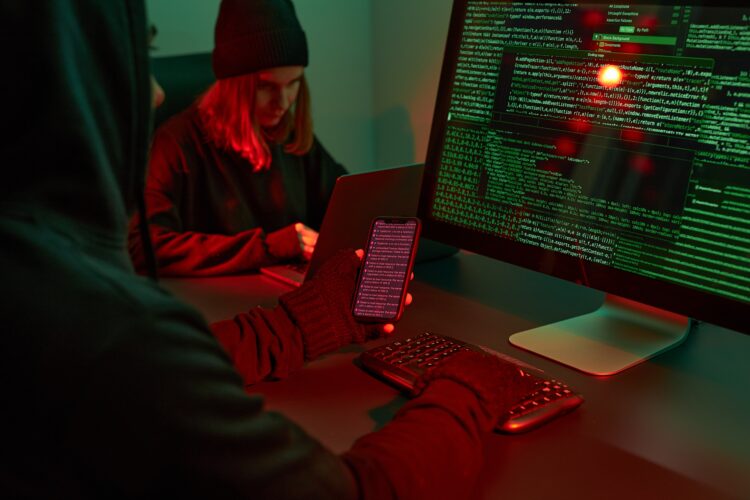Introduction
The physical borders of an enterprise network once ended at a firewall rack in a climate-controlled data center. Today, the border ends wherever an employee opens a laptop, a contractor unlocks a tablet, or an industrial sensor reports temperature readings from a warehouse floor. Every remote desktop session, every 5G-connected scanner, every SaaS log-in on a personal phone extends your attack surface and gives adversaries a fresh set of doors to jiggle.
Because attackers rarely breach an organization through a single, dramatic exploit, they start small-often with a phishing email that compromises one device-and pivot rapidly across flat internal networks. Hardened endpoints slow or stop that pivot, transforming thousands of individual risks into a mesh of mini-perimeters. This guide explains how to turn every workstation, server, and IoT node into a first-responder that can detect and disrupt malicious activity before it becomes a breach.
Threat Landscape for Endpoints
Modern malware campaigns target the path of least resistance: people. E-mail remains the top vector, but drive-by downloads, poisoned ads, and rogue USB sticks all carry ransomware, credential stealers, and file-less payloads that hide in memory. Attack frameworks such as Cobalt Strike or PowerShell Empire are freely available, making post-exploitation movement easier than ever.
Organizations that still rely on signature-based antivirus quickly learn the hard way how endpoint security protects organizations against evasive threats that morph faster than daily definition updates. Next-generation tooling-combined with least-privilege accounts and airtight configuration baselines-creates the multi-layered resilience needed to stop opportunistic criminals and nation-state actors alike.
Pillar 1: Prevention Technologies for Malware
- Next-Generation Antivirus (NGAV). Machine-learning engines analyze file entropy, strings, and behavior to spot malware on day zero-before signatures exist.
- Application Control & Whitelisting. A default-deny posture blocks unknown executables, DLL side-loads, and scripts, forcing attackers to burn custom exploits or move on.
- Secure Configuration Baselines. Adopting CIS Benchmarks or DISA STIG profiles for Windows, macOS, Linux, and mobile OSs eliminates risky defaults, unnecessary services, and exploitable registry keys.
Pillar 2: Detection & Response to Malware
Even the best preventive stack misses something eventually. That’s why Endpoint Detection & Response (EDR) agents stream telemetry-process starts, registry edits, network calls-to a central console that performs real-time correlation. When an unknown executable starts encrypting user documents at 400 files per minute, behavioral rules trigger host isolation, severing the NIC, dumping volatile memory, and alerting analysts. Automated playbooks can reverse malicious registry changes or delete scheduled tasks without waiting for human approval, shaving minutes off containment time.
Reputable studies underscore the urgency. Verizon’s latest Data Breach Investigations Report found that 74 percent of breaches involve the human element, and 40 percent originate at a compromised device. Meanwhile, the U.S. Cybersecurity and Infrastructure Security Agency (CISA) warns that unpatched VPN appliances and remote-desktop gateways remain top initial-access points because endpoint hygiene lags behind patch releases.

Identity & Zero-Trust Integration to Stop Malware
A hardened device is ineffective if an attacker logs in with stolen admin credentials. Phishing-resistant multi-factor methods, such as FIDO2 security keys or passkeys, block credential stuffing and SIM-swap tricks. Conditional-access policies tie every log-in to device health scores-an unmanaged laptop running an outdated OS simply cannot reach finance systems. Just-in-time privilege elevation grants temporary admin rights only for the duration of a vetted task, slashing the window an adversary has to abuse elevated accounts.
Patch & Vulnerability Management Against Malware
CISA’s Known Exploited Vulnerabilities catalog shows that VPN and browser bugs reach active exploitation within days of disclosure. Closing that gap means automating patch deployment for operating systems, browsers, hypervisors, and third-party plug-ins. Critical and high-risk CVEs should be remediated inside 72 hours; medium-risk items within 30 days. Continuous vulnerability scans feed asset-criticality data back to ticketing queues, ensuring that domain controllers get patched before a forgotten print server.
Data Protection on Endpoints
Full-disk encryption (BitLocker, FileVault, LUKS) neutralizes the risk of lost or stolen laptops. Context-aware DLP policies monitor clipboard activity, USB writes, and cloud-sync folders. If a user attempts to copy a customer database onto a flash drive, the DLP agent blocks the transfer or forces a justification workflow with management approval. Remote-wipe commands can zero a disk over LTE if the device leaves geofence boundaries.
Network Controls at the Device Level
Host-based firewalls reject unsolicited inbound traffic and restrict outbound ports to essential services. DNS-filtering agents block known command-and-control domains and newly registered phishing look-alikes identified by threat-intel feeds from the Microsoft Digital Defense Report. When users need on-prem resources, a micro-VPN or ZTNA client builds an app-specific tunnel-never full network connectivity-reducing lateral-movement risk.
Backup & Recovery Readiness for Malware
If ransomware still detonates, immutable backups convert a disaster into a restore operation. Follow the 3-2-1 strategy: keep three copies of data, on two media types, with one copy offline or object-locked in the cloud. Monthly restore drills validate that recovery-time (RTO) and recovery-point objectives (RPO) are achievable and documented. Drills also surface forgotten dependencies, such as license keys and domain-controller sequencing.
User Awareness and Policy Enforcement
Humans remain the most unpredictable control. Short, gamified phishing simulations achieve better retention than annual marathon webinars. Reward systems-digital badges, gift cards-encourage employees to report suspicious emails. Clear, enforced acceptable-use policies forbid ad-hoc software installs and remind staff that plugging in an unknown flash drive can cause network-wide downtime.
Measuring Success – Key Metrics
- Mean Time to Detect < 30 minutes.
- Critical patch compliance is ≥ 95 percent within three days.
- Incidents contained at the endpoint (no lateral spread) ≥ 90 percent.
- Phishing click rate is trending downward each quarter.
Dashboards that visualize these numbers keep executives focused on outcomes rather than tool checklists.
Future Outlook
AI-powered endpoint agents already ship with autonomous rollback, undoing malicious encryption by caching shadow copies in RAM. Chip-level security modules such as Microsoft Pluton and Apple T2 anchor the root of trust in silicon, foiling boot-kit malware. Finally, vendors are testing lightweight post-quantum algorithms so that disk-encryption keys and VPN tunnels resist future quantum-computer decryption.
Conclusion
Robust endpoint security blends hardened configurations, real-time behavioral detection, identity-centric access controls, and an engaged workforce. By treating every laptop, kiosk, and IoT sensor as its own perimeter, organizations transform the so-called “last line of defense” into a proactive first responder. When attackers meet devices that can quarantine themselves, revoke stolen credentials, and alert analysts within seconds, opportunistic breaches stall at the edge-long before they threaten crown-jewel servers or customer data in the cloud era.
Frequently Asked Questions
Q1. Is traditional antivirus still useful if we deploy EDR?
Yes. Modern NGAV engines deliver rapid, low-overhead prevention that blocks commodity malware before more expensive EDR analytics engage. Think of NGAV as the gate guard and EDR as the detective.
Q2. How often should we run phishing simulations?
Quarterly campaigns with varying difficulty keep users alert without fatigue. Pair each simulation with a two-minute “what you missed” video for maximum retention.
Q3. What is the minimum viable patch-management cycle for a small firm?
Aim for weekly OS updates and monthly third-party software patches. Critical zero-day vulnerabilities should trigger an emergency rollout within 72 hours, regardless of size.













Leave a Reply